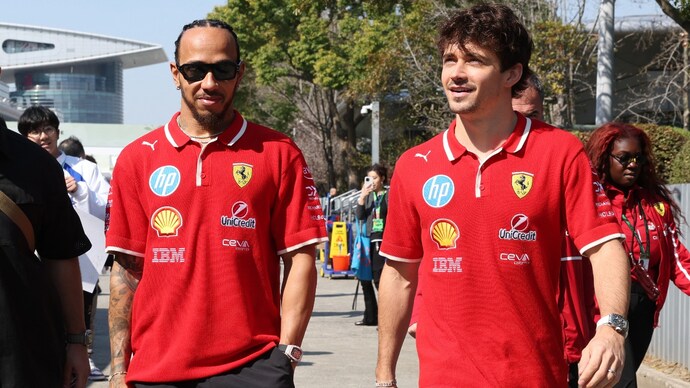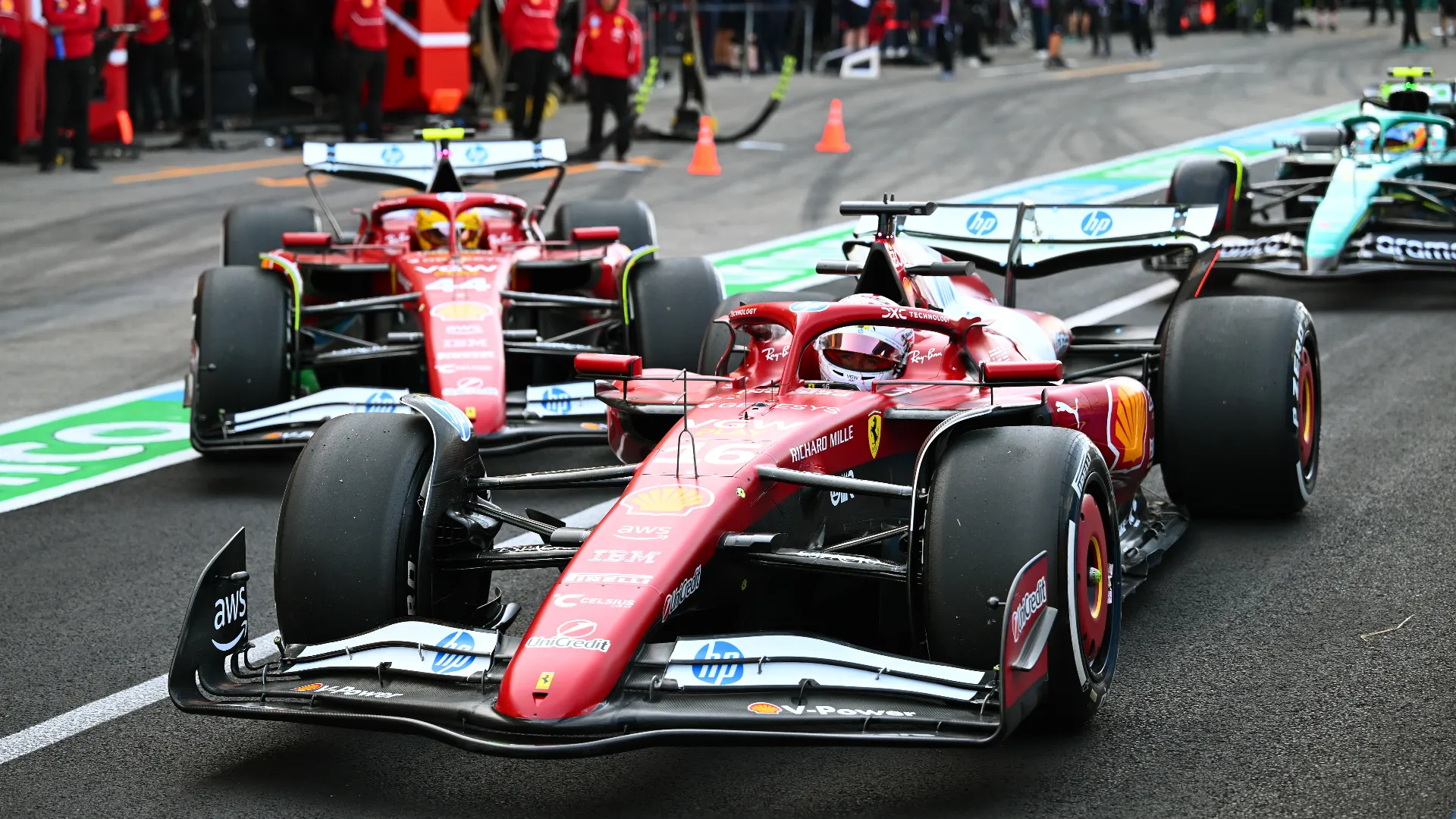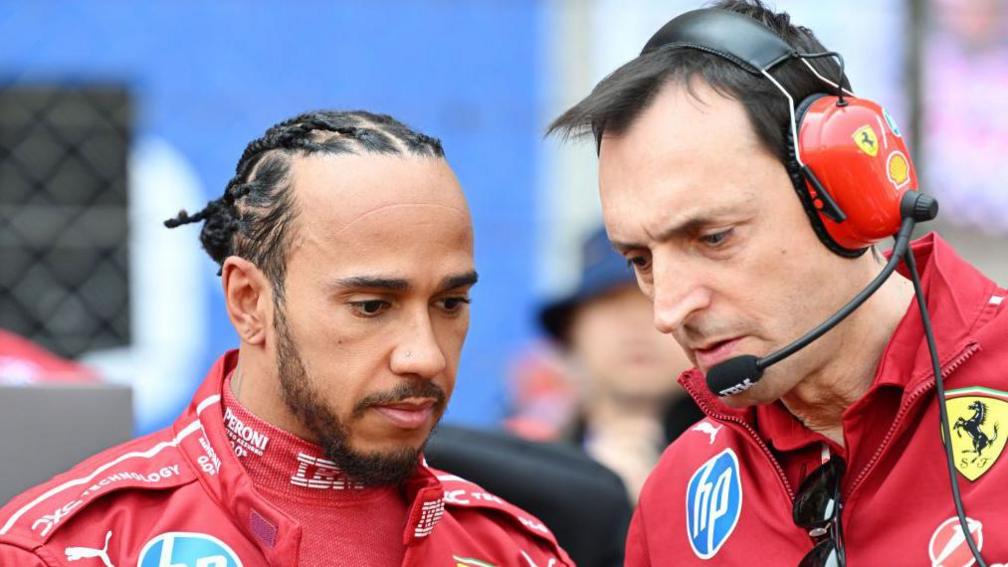Ferrari’s Final Gamble: Can the New Rear Suspension Save Their 2025 F1 Season?
As the 2025 Formula 1 season reaches its halfway point, Ferrari finds itself in a position that’s all too familiar—chasing shadows. After ending the 2024 campaign in a genuine fight for the Constructors’ Championship, many expected the Prancing Horse to start 2025 at full gallop. Instead, they’ve been consistently outpaced by McLaren, with Lando Norris and Oscar Piastri making the most of a blisteringly quick car while Ferrari has stumbled through a season of under-delivery and unfulfilled promise.
Despite boasting one of the most talented driver line-ups on the grid in Charles Leclerc and Lewis Hamilton, Ferrari has only four podium finishes to its name so far—none of which have come from Hamilton. With their title hopes long gone, Ferrari is now turning to what could be its last major upgrade of the season: a radical rear suspension overhaul set to debut at the Belgian Grand Prix.
This isn’t just another tweak—it’s Ferrari’s last roll of the dice in 2025.

A Season That Started With Promise
Ferrari’s intentions for 2025 were clear from day one. Team Principal Frédéric Vasseur stated that the team was gunning for both the Drivers’ and Constructors’ Championships. To match those ambitions, Ferrari launched the SF-25—a bold evolution of its 2024 machine that included a switch from a push-rod to a pull-rod front suspension system. The change was designed to unlock new aerodynamic pathways, with the goal of increasing airflow efficiency and creating a more stable platform for future developments.
On paper, the strategy made sense. The 2025 season is the final year under the current technical regulations, and with the field more tightly packed than ever, even the smallest performance gain could yield significant rewards. Unfortunately, those theoretical advantages haven’t materialized on track. Ferrari has struggled to extract consistent pace from its car, often caught between setup compromises and unpredictable handling.
The Rear Suspension Overhaul
Enter the much-anticipated rear suspension upgrade—a project that has been brewing quietly in the background for months. Rumors of this new system have swirled in the Italian media since the early part of the season, but development setbacks and reliability concerns kept the package shelved—until now.
During a filming day at Mugello, both Hamilton and Leclerc tested the SF-25 fitted with the revised rear suspension. The purpose of the day was twofold: to evaluate the new hardware under track conditions and to get driver feedback ahead of its competitive debut at Spa-Francorchamps.
The upgrade involves a reworking of the suspension’s geometry, specifically lowering the front attachment point of the upper triangle. While the change might seem subtle, in F1 terms it’s significant. Suspension geometry plays a critical role in ride stability and aerodynamic consistency, especially under braking and cornering loads.
Most importantly, this change is intended to better align the behavior of the rear suspension with the newly revised front end—an area Ferrari overhauled at the beginning of the season. The hope is that by resolving the disconnect between the two ends of the car, Ferrari can finally achieve a stable aerodynamic platform that allows them to run closer to the ground—essential for maximizing ground effect performance.

Spa: Make or Break
The Belgian Grand Prix will serve as the ultimate litmus test. If the upgrades deliver the stability and downforce Ferrari is chasing, it could vault them back into contention for podiums—or even an elusive race win. But failure to show improvement could spell an early end to their development push for 2025.
Regardless of how the weekend goes at Spa, Ferrari is unlikely to bring further major updates after the summer break. Resources and attention are already beginning to shift toward the 2026 car, which must comply with the next generation of F1’s technical regulations.
Lewis Hamilton’s Influence: Looking to 2026
While Ferrari fans have been eagerly awaiting performance improvements, seven-time World Champion Lewis Hamilton has been laying the groundwork for the future. Hamilton’s first season with Ferrari has been underwhelming, as he’s yet to finish on the podium and has frequently trailed his teammate Leclerc in both qualifying and race pace.
A key reason? The car just doesn’t suit him.
Speaking candidly ahead of the British Grand Prix, Hamilton explained that he’s had to adapt his driving style significantly to match the car’s characteristics—something Leclerc is naturally more attuned to, having helped develop it over several seasons.
“I’ve slowly migrated to the place where Charles runs the car,” Hamilton said. “It’s still tough. It’s a tough balance to drive and it’s not a comfortable one. It’s not one I want to have in the future.”
Hamilton’s solution? Influence the DNA of next year’s car. At Mercedes, Hamilton was the focal point of development. The team built cars around his preferences and gave him the confidence to extract every ounce of performance. He’s now pushing Ferrari to do the same—urging the team to take his feedback seriously and incorporate it into the 2026 design.
But therein lies the challenge: Leclerc has his own preferences. Ferrari’s engineers will have to walk a fine line between satisfying both drivers without compromising performance. That may be the most difficult balancing act of all.

The Bigger Picture
Ferrari’s situation in 2025 encapsulates many of the challenges facing modern F1 teams. The margins are finer than ever. Regulation stability should, in theory, allow teams to converge toward optimal designs—but in reality, it’s often the team that adapts most effectively to small rule interpretations and setup nuances that pulls ahead.
Ferrari chose to be aggressive in its development approach this year, believing that the changes would offer a higher performance ceiling. That gamble hasn’t paid off yet, but the new rear suspension could finally unlock the potential that’s been buried under months of compromise and inconsistency.
Whether it’s enough to salvage their season remains to be seen.
What’s Next?
The Belgian Grand Prix won’t crown a new champion or hand out any trophies, but for Ferrari, it could decide the narrative of their 2025 season. A strong showing would inject much-needed momentum. A poor result, and all eyes will shift firmly to 2026 and the future Hamilton hopes to help build.
Either way, Ferrari fans should brace themselves. This isn’t just another upgrade—it’s Ferrari’s final shot at rewriting their story in 2025. And with Lewis Hamilton hungry for redemption and Leclerc still aiming to cement his legacy, the stakes couldn’t be higher.
The road back to glory starts now. Or it doesn’t.
Full Video:
